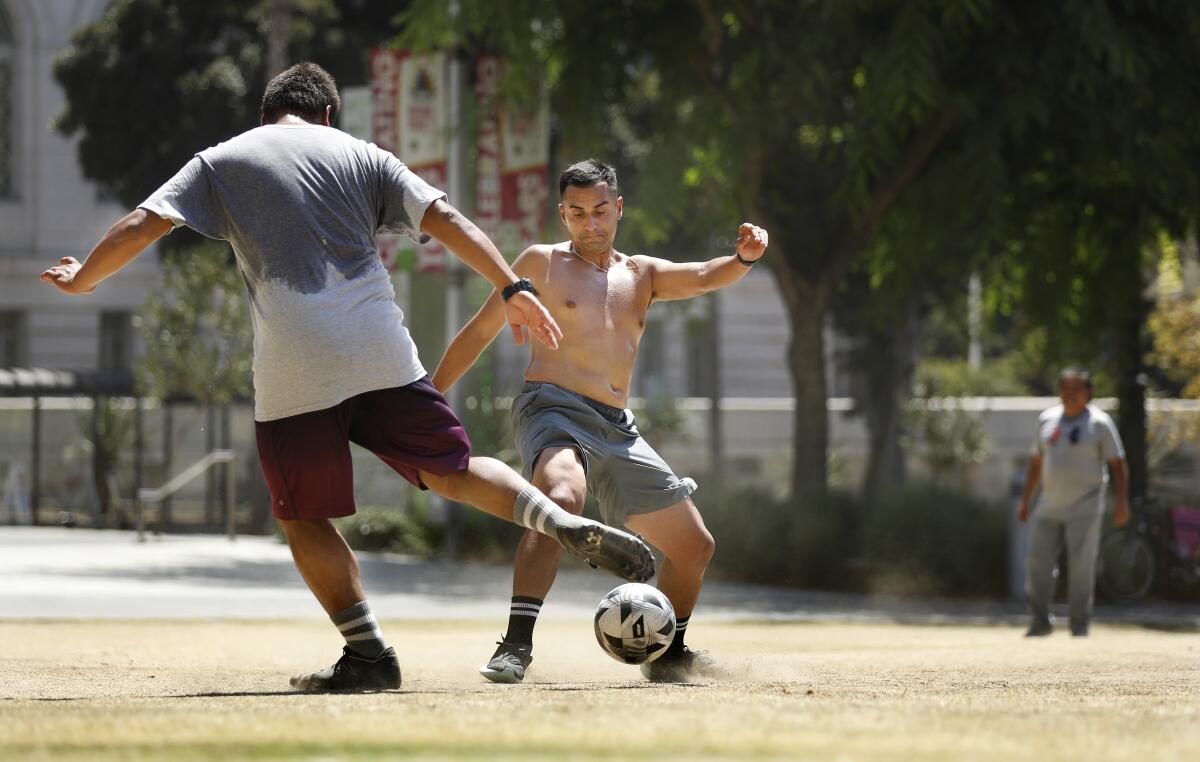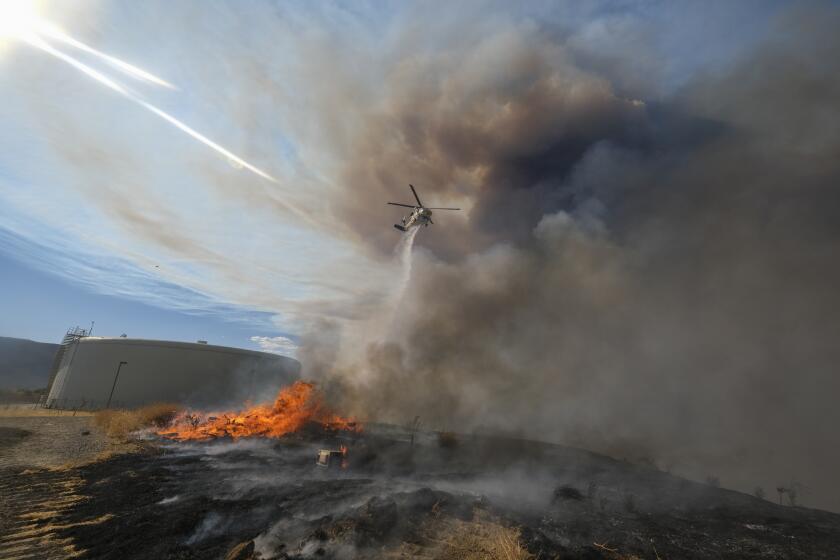Southern California heat wave continues to break records, with more expected to fall

- Share via
The heat wave lingering in Southern California for a second day continued to set or match daily records Thursday, and the National Weather Service expects more historic temperatures in the coming days.
Lancaster, Palmdale and Sandberg, located 10 miles east of Gorman, all reached record highs for Sept. 1, with some of the records falling after more than 70 years, according to the weather service’s Oxnard office.
Lancaster saw a high of 112 degrees Thursday, surpassing the previously daily high of 110 set in 1950. On Wednesday, the city tied its daily record for Aug. 31, previously set in 1948, with a high of 109.
Sandberg’s high of 99 broke the 1996 record of 97 degrees; its high of 100 on Wednesday exceeded the previous daily record of 98, set in 2017.
Palmdale matched its daily record of 109, originally set in 1947.
In Big Bear, a high of 86 degrees tied a daily record set in 1978, according to the weather service’s San Diego office.
California officials have extended a Flex Alert into Friday, and triple-digit heat at a fire near Castaic forced officials to pull back some firefighters on the front lines.
Meteorologists with the National Weather Service in Oxnard said temperatures could dip by 5 to 10 degrees Friday, but the reprieve will be brief; daily records could be set Sunday in the Los Angeles County valleys, the Antelope Valley and San Luis Obispo County mountains, the weather service said.
The heat wave has made difficult firefighting efforts on the largest blaze currently burning in Southern California.
On Thursday, officials pulled back firefighters from the front lines of the nearly 6,000-acre Route fire burning near Castaic, after multiple firefighters suffered heat-related illness.
“It’s a tactical pause for the crews that are experiencing the greatest heat impact,” said Los Angeles County Deputy Fire Chief Thomas C. Ewald. “We’re just trying to reduce the strain being placed on line firefighters.”
More to Read
Sign up for Essential California
The most important California stories and recommendations in your inbox every morning.
You may occasionally receive promotional content from the Los Angeles Times.















